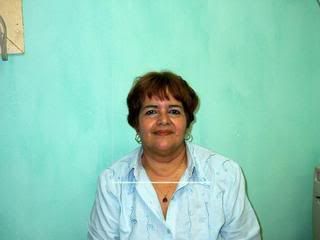Wednesday, May 28, 2008
Quick and Profound Changes Expected
In the right side of the accounts sheet there are assets like pharmaceuticals, vaccines, medical equipment, monoclonal antibodies and biotech advances only achieved by the most developed countries. Health and education indicators equal or surpass those of the region and many of the First World.
Technologies and scientific results in agriculture have been applied successfully in Mexico, Brazil, Central America, but not in the island. With Cuban technical assistance in coffee plantations, Vietnam has become in a short period one of the leading exporters of the aromatic seed.
However, almost half a century later, the Cuban economy is still the most vulnerable point of this socialist project. Seventy-two percent of all nutrients currently eaten by Cubans are imported, even when the country has fertile lands and a privileged climate to grow them.
No wonder, as it has been found that 51 percent of the agricultural land is idle and from that figure, 33 percent is covered with a thornbush called “marabu” and 17 percent are pastures.
Key concepts like land in usufruct and individual property, which includes housing, cars and other belongings, is restricted by prohibitions that nothing have to do with the Constitution or the laws of the economy.
Blessed with other resources like minerals –Cuba has the second largest reserves of nickel in the world-, plenty of human and technological potential for the development of renewable sources of energy, besides promisory oil and gas deposits to be exploited in Cuba´s part of the Exclusive Economic Zone in the Gulf of Mexico.
Then one has to conclude that the Cuban economy is like an unpolished diamond, whose owners don´t seem to agree on which tools to use in order to enhance its beauty and durability.
It is necessary to resolve distorsions, incentivate and liberate productive forces, as well as relaunch the small and medium cooperative and private enterprise, thinks Omar Everleny Perez, senior researcher at the Center of Studies on Cuban Economy (CEEC)
Reactivate foreign investment, adding new priorities, transiting gradually from product to personal subsidies, are among the academic´s recommendations for this process of changes put in place by President Raul Castro.
Before updating salaries to current cost of living levels, academics warn there must first be a significant increase in the offer of products and services to avoid inflation pressures.
The main shot should be aimed at increasing the real salary or buying power of the Cuban peso through the reduction of prices in the hard currency stores and by rewarding higher productivity among workers.
Cuba has become, in the last decade, a services economy, with 76 percent of its Gross Domestic Product occupied by this sector. This happens in many Caribbean nations depending on tourism as first income-earning activity as is Switzerland withy its powerful financial sector.
But the neglect imposed on the agricultural and livestock sector –only 4 percent of the GDP- is very dangerous. Reason why over 1.7 billion dollars are spent in buying foodstuff that as Armando Nova, also specialist at the CEEC indicates, could be domestically produced.
Every penny earned should go to productive investment in order to become self-sufficient in food, recover Cuba´s historic capacity of producing sugar cane and its by-products, which at the end, is an excellent energy provider, for humans, livestock and industry.
Doctor Anicia Garcia, researcher of the CEEC, recalls there are only seven branches of the economy, out of more than
Among the challenges she sees in the future are finding a solution to the problem of decapitalization, reducing energy consumption, achieving greater cooperation among industrial branches and higher competitivity that would boost exports.
Finally, there is the need to prevent extreme measures without falling short of what is needed, and what is hardest of all, shun dependence on one or two countries commercially or economically, however friendly they may be, because the world is constantly moving and may take a sharp turn.
